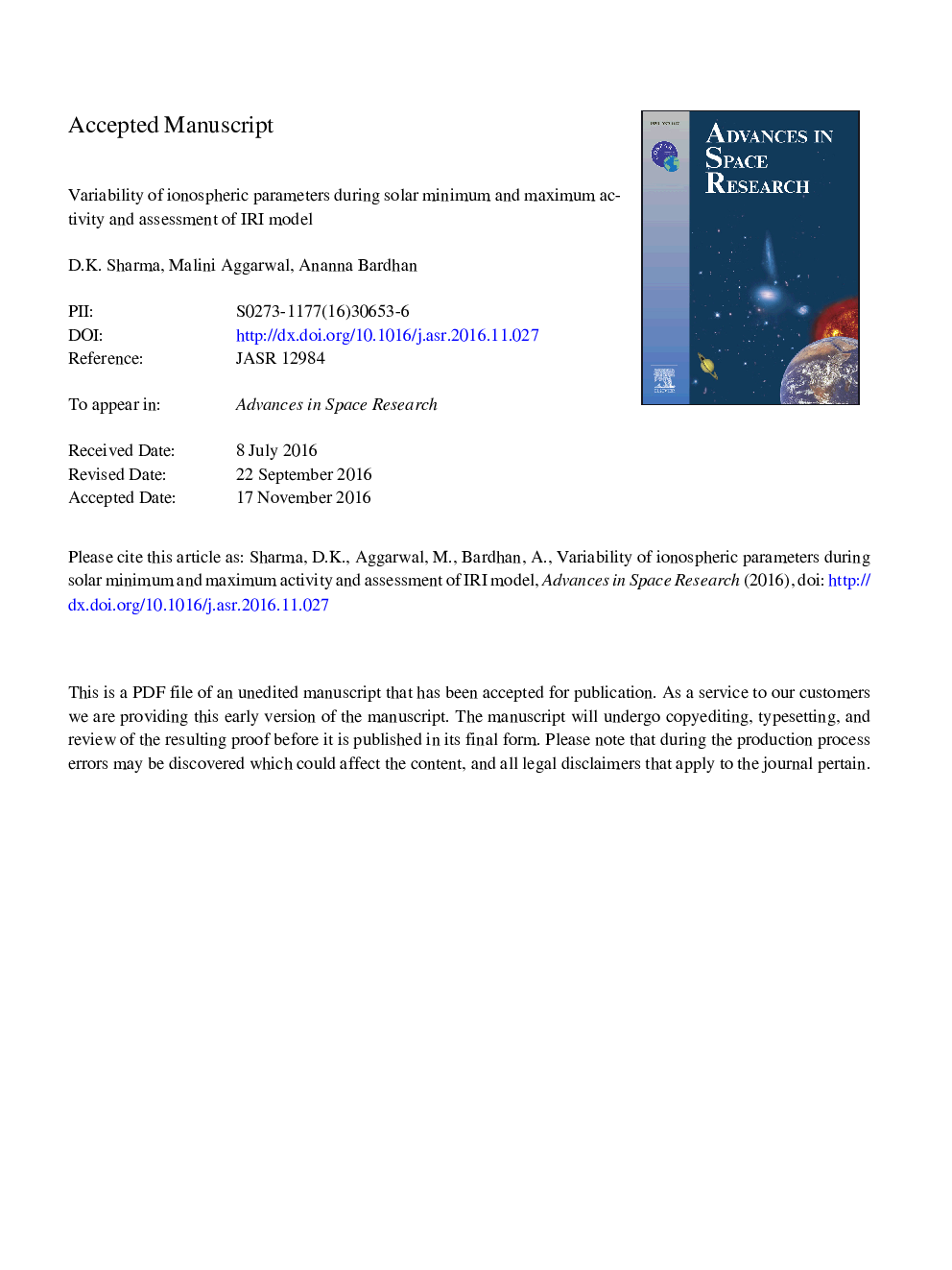| Article ID | Journal | Published Year | Pages | File Type |
|---|---|---|---|---|
| 5486174 | Advances in Space Research | 2017 | 17 Pages |
Abstract
The ionospheric parameters (electron and ion plasma temperatures (Te and Ti) and total ion density, Ni) as obtained by the Indian SROSS-C2 satellite (altitude â¼500 km) have been investigated during low (year 1995, F10.7 â¼Â 77 sfu) and high (year 2000, F10.7 â¼Â 177 sfu) solar activity periods. The region under study spans over 5°S-30°N geomag. latitude and 60-100°E geog. longitude over the Indian sector. The observations are compared with the modelled values using IRI-2007 and IRI-2012 versions to assess model predictability. We found that minimum plasma temperatures (Te and Ti) in nighttime gets twice hotter whereas maximum temperatures in early morning gets reduced by half (cooler) when the solar flux gets doubled indicating a direct relation of Te and Ti with solar flux, F10.7 in nighttime but inverse in the morning hours. The ion density (Ni) exhibits solar activity dependence throughout the day and increases by one order when solar activity gets doubled. The modelled Te and Ti are found in agreement to the observed values for high solar activity over both the regions. Whereas the discrepancy exists during low solar activity period over both the regions with over-/under-estimated values in nighttime/morning and noontime respectively. The latest IRI-2012 model improves the nighttime Te and Ti whereas the modelled Ni is found in complete agreement to the observations.
Related Topics
Physical Sciences and Engineering
Earth and Planetary Sciences
Space and Planetary Science
Authors
D.K. Sharma, Malini Aggarwal, Ananna Bardhan,
